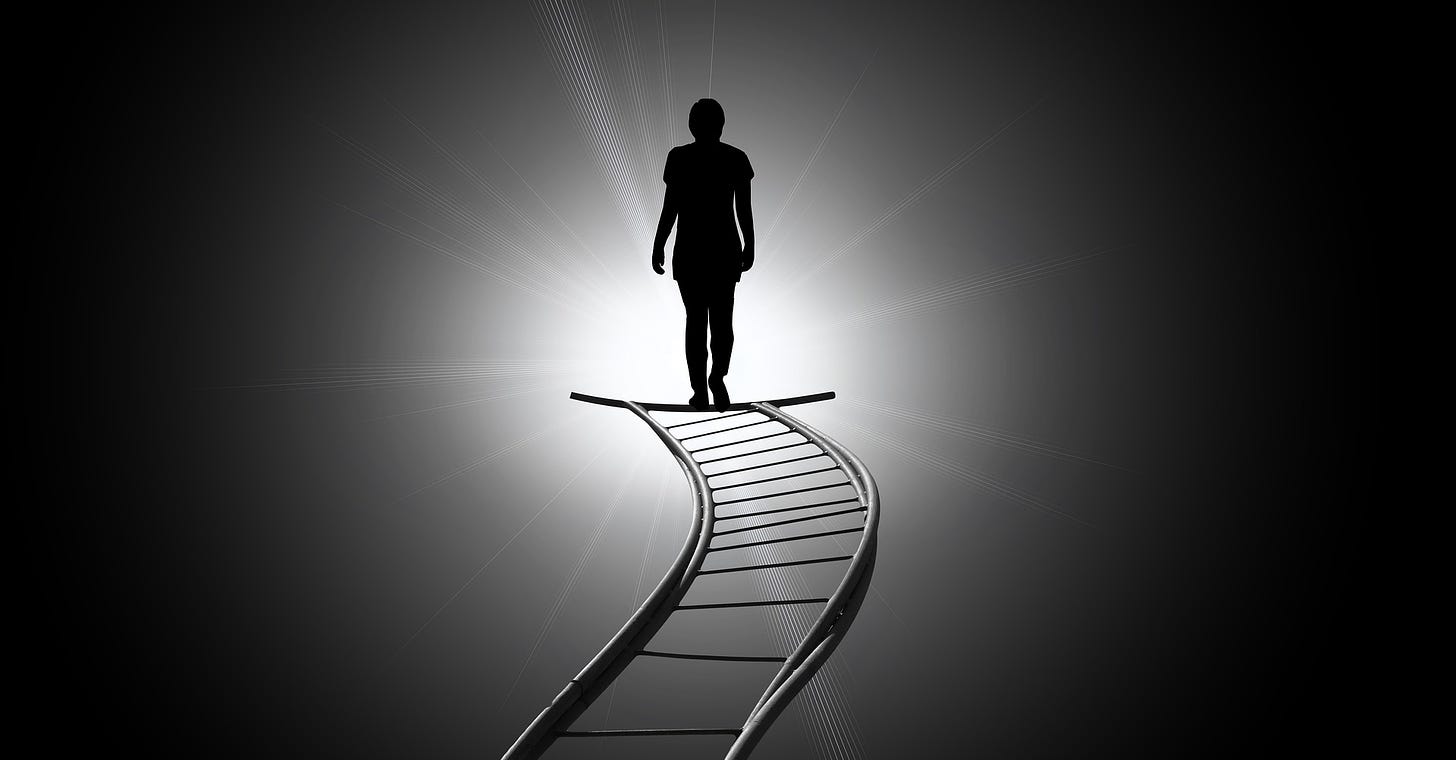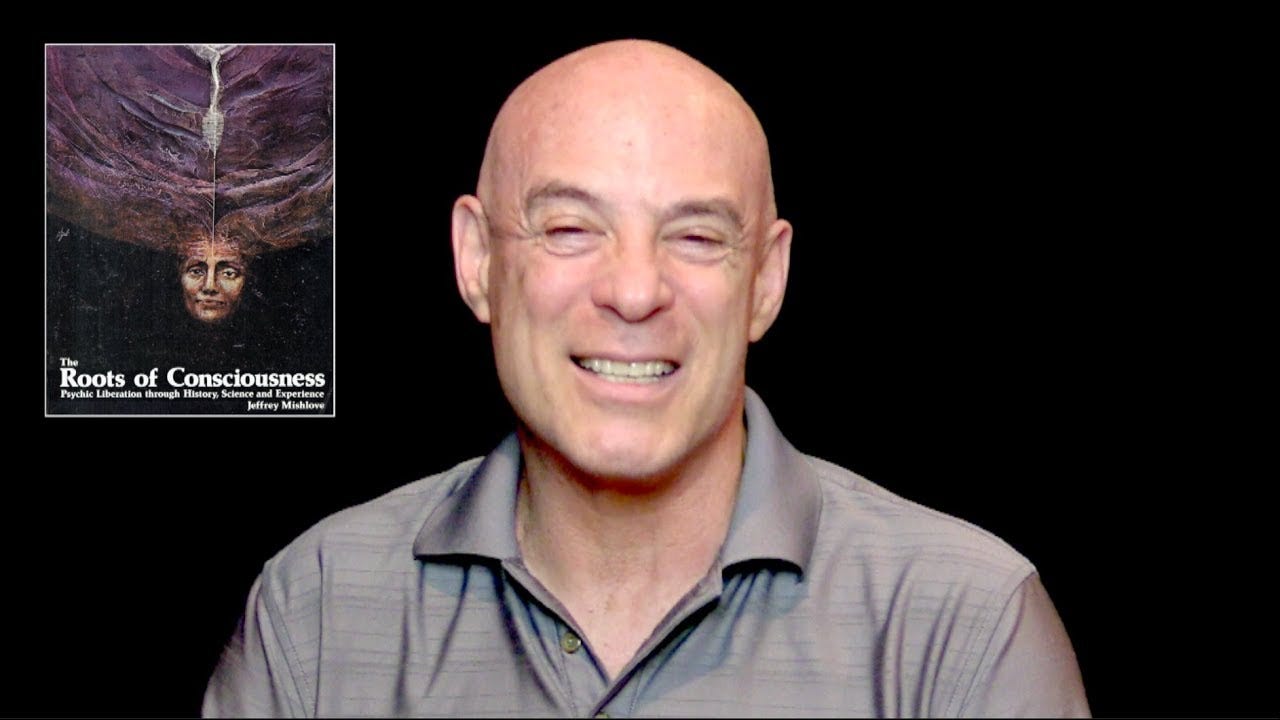The essay about life after death that won $US500,000
Looking at Jeffrey Mishlove's prize-winning writing
One baking-hot Saturday a decade ago in Sydney, a friend of mine died. That night, I dreamed of her. She was sat at a table in front of a plain interior wall with a door to her left and a door to her right, looking amused. “It’s easier than you think to go in and out of the doors,” she said, “and I’m going to tell you how.”
She continued talking, but all I could think about was that I was having a conversation with someone who’d just died and how cool the whole thing was, and I zoned out. After a few seconds, I realised she’d fallen silent.
“Were you listening?” she asked.
“Um – no, I was distracted.”
She fixed me with her trademark look for someone who’d done or said something dumb, and I woke up.
When I eventually told the anecdote to her very rationalist husband, he put the dream’s occurrence down to my processing her death. But I wasn’t so sure – she was open to non-physical phenomena. Was been trying to tell me something important?
Belief in post-mortem survival, as Jeffrey Mishlove notes in Beyond the Brain: The Survival of Human Consciousness After Permanent Bodily Death, the winning entry in the Bigelow Institute for Consciousness Studies’ (BICS) 2021 essay competition, are common to every culture and country on earth. In the US, for example, it’s held steady at 70 per cent for over 75 years.
BICS asked for arguments which proved the survival of human consciousness after death, receiving 29 entries, which were judged over four months by a panel of six, including Brian Weiss, emeritus chair of psychiatry at Mount Sinai Medical Center in Miami, and Jessica Utts, emerita professor of statistics at University of California, Irvine.
Mishlove’s success – he won $US500,000, with the prize pool a remarkable $US1.8 million, each essay winning at least $US20,000 – may be due to his relentless accretion of evidence. And he’s devoted many years to studying this and other topics since being awarded, in 1980, the only doctoral diploma specifically in parapsychology ever issued by an accredited American university.
Mishlove (pictured above with his first book) was steered towards his doctorate when he was a graduate student focusing on criminology. But when he dreamed of his uncle Harry, not knowing he had just died, he was transformed.
“Uncle Harry appeared and spoke to me about my life, addressing personal issues in a way that penetrated me to the core,” writes Mishlove. “I cannot say I knew Harry well during his life. He was over fifty years my senior. I was 25 years old. Yet, in this dream that seemed more real than waking reality, we shared a soul-to-soul communion that defied description.
“I awoke and wept, crying joyful tears and simultaneously singing a Hebrew song, Avinu Malkeinu, normally reserved for the most sacred Jewish observances. Something profoundly beautiful and transformative had touched me. Neither before nor since have I had a dream embodying such an intensely sublime, emotional state.”
Wanting to understand the experience, he created a personalised, interdisciplinary doctoral major in 1973 at the University of California, Berkeley – an option eliminated shortly after his degree, but since reinstated – and found the necessary professorial staff to sponsor him. As you might imagine, his topic of study met with considerable resistance. People he terms “pseudo-sceptics”, in a 2021 podcast for Exploring Consciousness (EC, #44 and #45), tried to force his degree to be revoked – which looked a possibility, until the provost stepped in. There was also a six-year libel action against a publication for claiming his work was incompetent, which when settled in his favour helped him buy land which forms the basis of his current wealth.
Peppered throughout the multi-media BICS essay are clips from interviews he’s conducted over the decades – he started his media career on (San Francisco) Bay Area radio before moving to public television in 1986, for which he hosted the Thinking Allowed show until 2002, eventually broadcast in over 100 North American cities. There is also footage from his current YouTube show, New Thinking Allowed, which began in 2016 and has almost 12 million views.
Mishlove refers to “a lot of data looking for a theory” in the EC podcast. Before we examine highlights of his data, what is his essay’s framework? He quotes Max Planck, the father of quantum physics, with “an explicit statement of idealist metaphysics”:
I regard consciousness as fundamental. I regard matter as derivative from consciousness. We cannot get behind consciousness. Everything we talk about, everything that we regard as existing, postulates consciousness.
Mind, then, is the only thing we have direct access to. “Idealism, the position the universe is essentially mindlike, satisfies the parsimony requirement in the metaphysical domain,” he writes. That is, that the simplest explanation – the principle known as Occam’s razor – is the most likely.
Personal consciousness, he argues, exists within mentality-at-large, with matter a type of perception. And post-mortem existence will differ from physical experiences. Introducing a clip (below) from a 1980s interview, Mishlove writes, “Mathematician and theoretical physicist Saul-Paul Sirag explains – based on his own theoretical model – that consciousness exists in hyperspace. Sirag also says our 4-D spacetime matrix is also embedded within hyperspace. Thus, the mind isn’t in the body. Instead, the body – and, in fact, the entire phenomenal world – is in mind-at-large. Of course, it is also very real. In other words, our own minds are a projection from a much greater mind.”
Single facts can never be “proved” except by their coherence in a system. But, all facts come singly, anyone who dismisses them one by one is destroying the conditions under which the conviction of new truth could arise in the mind.
- F. C. S. Schiller, philosophy professor, the University of Oxford (1864-1937)
Mishlove employs what he calls a “spectrum” of arrows in support of his argument:
Near-death experiences
After-death communications
Reincarnation
Peak in Darien Experiences (seeing deceased family members when near the end of life)
Possession
Instrumental Trans Communications (contacting spirits via electronic means)
Xenoglossy (speaking, writing or understanding an unknown language)
Mental mediumship
Physical mediumship
Over 62 pages, he presents case after case after case in the nine topics. “While each individual arrow ... is strong,” he writes, “when united as a whole, they are virtually invincible.” He tells The Witness Space, “Critics … would like to find flaws in each individual piece of evidence in order to avoid seeing the overall patterns in the data.”
There are tales of “colours beyond the rainbow” and swooping golden orbs of light, of near-death experiences during cardiac arrest when brain function has ceased, and sensations of overwhelming, unconditional love. Elizabeth Kubler-Ross, who introduced the famous “five stages of grief” model, told of recognising a patient of hers, a Mrs Schwartz who had been dead for 10 months, in a chance meeting. Kubler-Ross was considering quitting her university post; Mrs Schwartz, appearing very much alive, insisted she do no such thing and, when asked, wrote her a note and signed it. Kubler-Ross’s work on death and dying would make her famous.
The database of young children reporting past lives at the University of Virginia’s Department of Perceptual Studies has over 2500 entries, with 1700 of those leading to their identification. This is, for Mishlove, the closest to a scientific experiment that proves life after death. “If reincarnation did not exist,” he tells The Witness Space, “one would not expect to find 1700 ‘solved’ cases in which statements by young children led to an identified previous person. Therefore, the null hypothesis has been falsified.”
Mishlove covers possession, or “replacement reincarnation”, telling the story of Sumitra Singh, an Indian woman who, in 1985, started having fits and became ill. She seemed to die, but as her family began readying her for cremation, revived and said her name was Shiva Tripati. She had no idea who any of them were, and said that she’d been murdered by her sister-in-law three months prior.
The Tripatis had sued Shiva’s in-laws after her body had been discovered, believing they had played a role in her death. When they heard of a possession involving Shiva, they visited the village, 100 kilometres away, and were recognised and warmly greeted on arrival. She would go on to identify 22 of Shiva’s relatives from photographs, with the new personality remaining until her death in 1998.
There’s Anabelo Cardoso, a former Portuguese diplomat who tunes radios to emergency-broadcast channels normally transmitting white noise, and has two-way conversations with voices that appear. Mishlove even recounts a “text message from the dead”, sent at 3.23am to author Emmy Vadnais’s stepfather, Don Empson. It was sent from Emmy’s phone which hadn’t, however, recorded any such message, prompting them both to believe its source was her recently deceased mother-in-law. It simply read, “Glad it’s over!”
Many of the scientific pioneers covered in the essay date from the 19th century. Mishlove notes in the EC podcast that psychology first concerned the study of the soul, but the discipline became concerned with behaviour, ending up mid-century charting the results of rats running around mazes. “In spite of the turn towards positivism and behaviourism in psychology – and away from the study of consciousness, per se – a lot of good research on survival continued into the 20th century.” He goes on to name Gladys Osborne Leonard, also covered in the essay.
John Thomas, a student at Duke University, earned a psychology doctorate for his nine-year study of Leonard’s mediumship, seeking proof of his wife’s continued existence. Of 2964 statements of possibly verifiable facts Leonard made, 2358 were correct, 158 incorrect, 231 inconclusive and 179 unverifiable – a strike rate of 92.3 per cent once the last category was removed.
And Mishlove even digs up a Brazilian murder trial in which the judge dismissed the charges after the shooting victim’s parents presented a message from their dead son, a friend of the accused, transmitted via a famous medium. The judge said, “We must give credibility to the message automatically written by Francisco Candido Xavier where the victim recounts the event, exempting the defendant from any guilt. He describes the scene where he and his friend were playing with the gun, and how the shot came to be fired.”
Will his essay change anyone’s mind? It may, though those in a position to seek it out or stumble across it would probably be predisposed towards its conclusion: “We hide from our own deepest identity when we postulate that consciousness is extinguished with the death of the body – resulting in a severe gap in our capacity for self-knowledge.”
Bonus clip: it’s cats and dogs out there
Next week: The scientific trial in which the control group outperformed the psychics.






